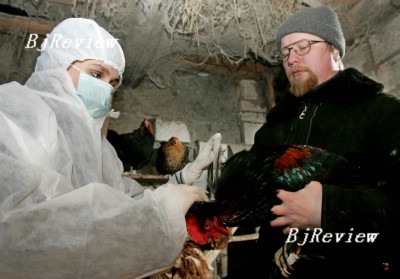
This spring, the world again faces the prospect of a bird flu outbreak
Since 2003, when people first encountered the virus that can jeopardize their lives and property, the disease has appeared every year. The last reported outbreak was at the end of last year, but bird flu has spread to many countries in Asia, Europe and Africa. And as wild birds, which can carry the virus, migrate in the spring, health experts are concerned about the potential impact.
As the virus spreads rapidly among poultry, the best way to stop the spread is to slaughter entire flocks in which the virus is found, which causes great economic losses. Last year, for example, European countries killed hundreds of millions of birds, including chickens, ducks, geese and pigeons, in order to stem the infection.
Since mammals and humans can be infected from direct contact with sick birds or through contaminated soil or dust, more species can be in jeopardy. For example, in 2004, a zoo in east Thailand had to kill about 150 tigers because some became infected by eating chicken contaminated with the bird flu virus, and spread the disease to others.
In 2006, at the World Economic Forum in Davos, Switzerland, a panel of industrialists and experts cited the potential for the bird flu virus to mutate and trigger a flu pandemic that could kill millions of people as the most urgent threat to the world. According to statistics from the World Health Organization (WHO), 272 people have been infected by the H5N1 virus and 166 have lost their lives. And the outlook is not more optimistic this year.
Dr. Margaret Chan, the newly appointed Director General of the World Health Organization (WHO), recently warned that the threat of influenza pandemic has not receded, and urged countries around the world to prepare for such an eventuality.
She stressed that the H5N1 bird flu virus has already killed more than half of the people who became infected. For example, in Indonesia, the country with the largest number of deaths from the disease, 63 of the 83 people infected with the virus succumbed. The situation is so severe that the country's president is considering declaring the disease a "national disaster, so money can be allocated from the state budget's disaster fund."
|
